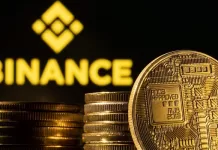Blockchain technology is a decentralized, distributed ledger that stores the record of ownership of digital assets. Any data stored on the blockchain is unable to be modified, making the technology a legitimate disruptor for industries like payments, cybersecurity, and healthcare.
Sam Daley, the tech expert, says a simple analogy for how blockchain technology operates can be compared to how a Google Docs document works. “When you create a Google Doc and share it with a group of people, the document is simply distributed instead of copied or transferred.
Read Also: Sanwo-Olu Urges Adoption Of Blockchain Technology

This creates a decentralised distribution chain that gives everyone access to the base document at the same time. No one is locked out awaiting changes from another party, while all modifications to the document are being recorded in real-time, making changes completely transparent.
A significant gap to note however is that, unlike Google Docs, original content and data on the blockchain cannot be modified once written, adding to its level of security”, Daley said.
Of course, blockchain is more complicated than a Google Doc, but the analogy is apt because it illustrates critical ideas of the technology.
Blockchain is an especially promising and revolutionary technology because it helps to reduce security risks, stamp out fraud and bring transparency in a scalable way.
Popularised by its association with cryptocurrency, blockchain technology has since evolved to become a management solution for all types of global industries. Today, you can find blockchain technology providing transparency for the food supply chain, securing healthcare data, innovating gaming, and overall changing how we handle data and ownership on a large scale.
Blockchain technology consists of three important concepts: blocks, nodes, and miners. Every chain consists of multiple blocks and each block has three basic elements:
The data in the block.
The nonce — “number used only once.” A nonce in the blockchain is a whole number that’s randomly generated when a block is created, which then generates a block header hash.
The hash — A hash in the blockchain is a number permanently attached to the nonce. For Bitcoin hashes, these values must start with a huge number of zeroes (i.e., be extremely small).
When the first block of a chain is created, a nonce generates the cryptographic hash. The data in the block is considered signed and forever tied to the nonce and hash unless it is mined.
Read Also: How Streaming Platforms Improved Nigerian Movie Production– Antar Laniyan

Miners create new blocks on the chain through a process called mining.
In a blockchain, every block has its unique nonce and hash, but also references the hash of the previous block in the chain, so mining a block isn’t easy, especially on large chains.
Miners use special software to solve the incredibly complex math problem of finding a nonce that generates an accepted hash. Because the nonce is only 32 bits and the hash is 256, there are roughly four billion possible nonce-hash combinations that must be mined before the right one is found. When that happens, miners are said to have found the “golden nonce” and their block is added to the chain.
Making a change to any block earlier in the chain requires re-mining not just the block with the change, but all of the blocks that come after. This is why it’s extremely difficult to manipulate blockchain technology. Think of it as “safety in math” since finding golden nonces requires an enormous amount of time and computing power.
When a block is successfully mined, the change is accepted by all of the nodes on the network and the miner is rewarded financially.





